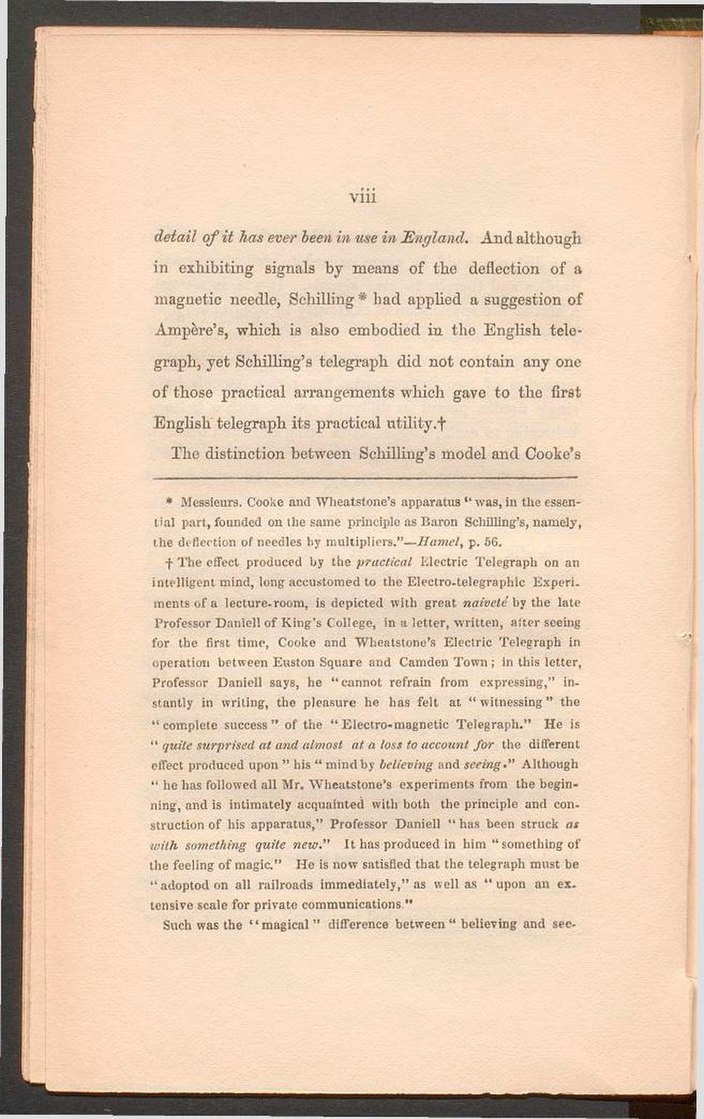viii
detail of it has ever been in use in England. And although in exhibiting signals by means of the deflection of a magnetic needle, Schilling[1] had applied a suggestion of Ampère’s, which is also embodied in the English telegraph, yet Schilling’s telegraph did not contain any one of those practical arrangements which gave to the first English telegraph its practical utility.[2]
The distinction between Schilling’s model and Cooke’s
- ↑ Messieurs. Cooke and Wheatstone’s apparatus “was, in the essential part, founded on the same principle as Baron Schilling’s, namely, the deflection of needles hy multipliers.”—Hamel, p. 56.
- ↑ The effect produced by the practical Electric Telegraph on an intelligent mind, long accustomed to the Electro-telegraphic Experiments of a lecture-room, is depicted with great naivete by the late Professor Daniell of King’s College, in a letter, written, after seeing for the first time, Cooke and Wheatstone’s Electric Telegraph in operation between Euston Square and Camden Town; in this letter, Professor Daniell says, he “cannot refrain from expressing,” instantly in writing, the pleasure he has felt at “witnessing” the “complete success” of the “Electro-magnetic Telegraph.” He is “quite surprised at and almost at a loss to account for the different effect produced upon” his “mind by believing and seeing.” Although “he has followed all Mr. Wheatstone’s experiments from the beginning, and is intimately acquainted with both the principle and construction of his apparatus,” Professor Daniell “has been struck as with something quite new.” It has produced in him “something of the feeling of magic.” He is now satisfied that the telegraph must be “adoptod on all railroads immediately,” as well as “upon an extensive scale for private communications.” Such was the “magical” difference between “believing and
